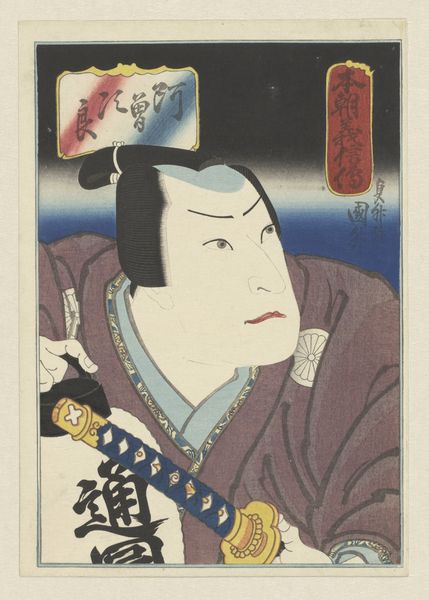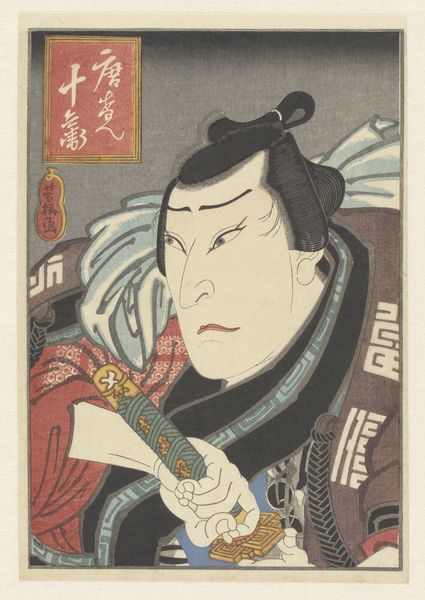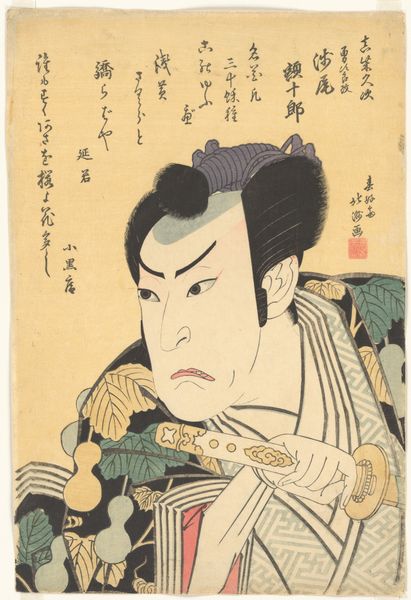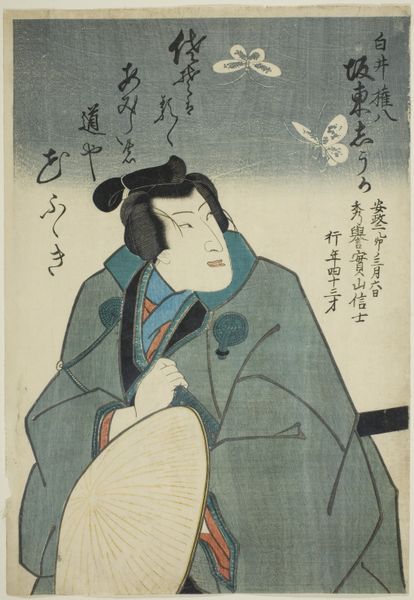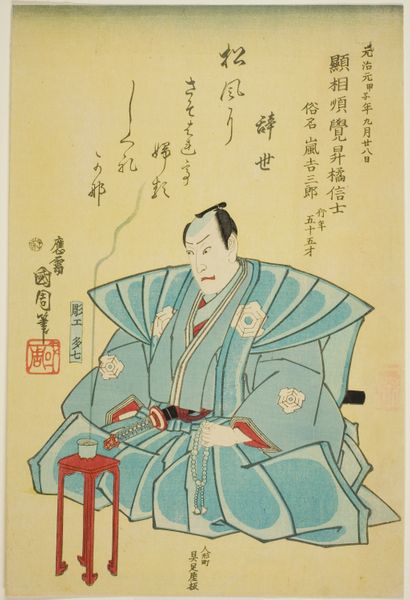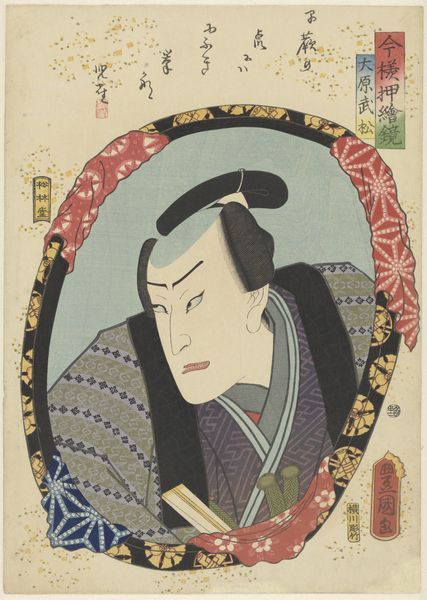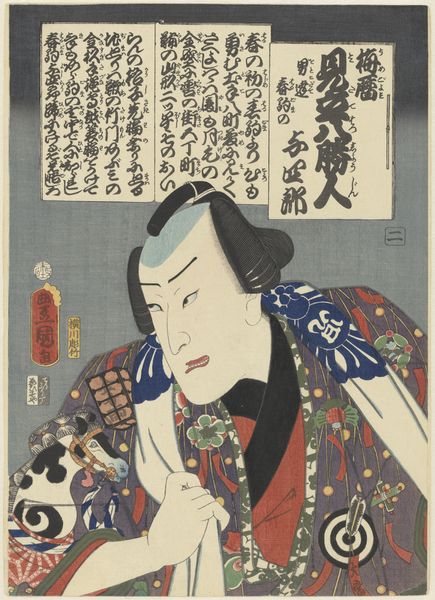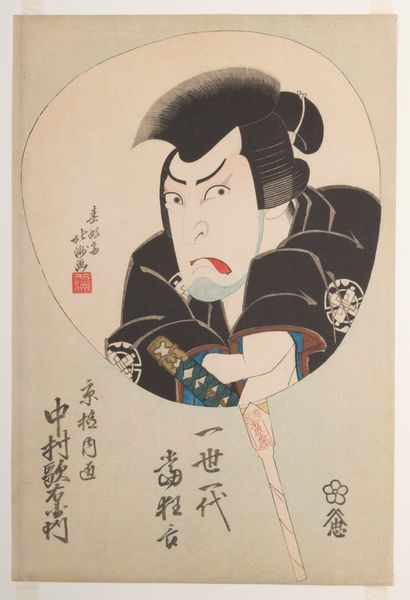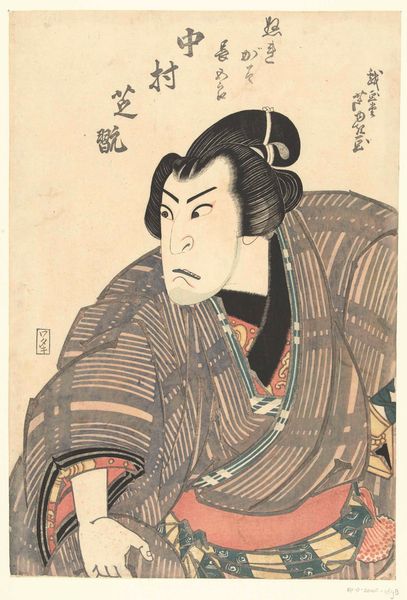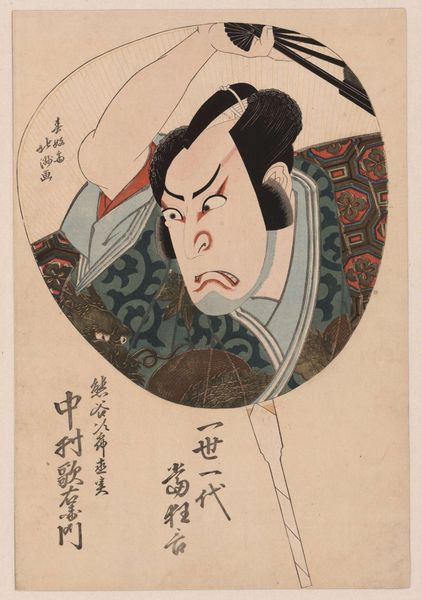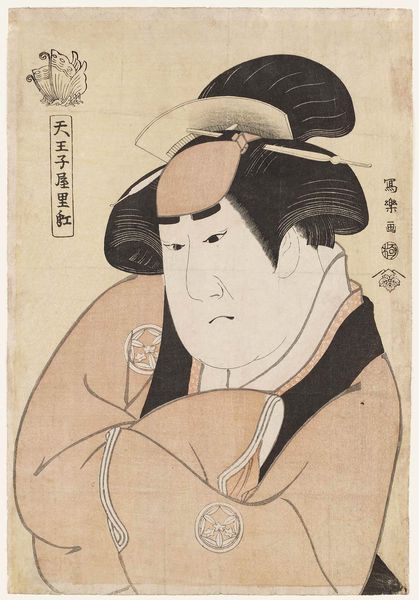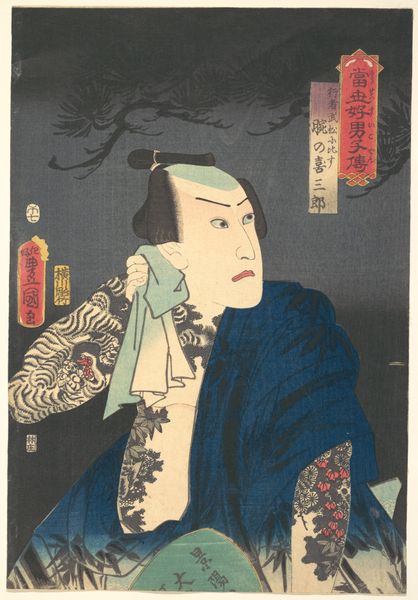
print, woodblock-print
#
portrait
# print
#
caricature
#
asian-art
#
caricature
#
ukiyo-e
#
woodblock-print
Dimensions: height 252 mm, width 177 mm
Copyright: Rijks Museum: Open Domain
Editor: Here we have Utagawa Sadamasu II’s “Honchô gishinden,” created around 1848. It's a striking woodblock print, currently residing at the Rijksmuseum. What are your first impressions? Curator: It presents itself boldly—the exaggerated features border on the grotesque, yet there's a captivating dynamism. The subject's gaze directs us beyond the frame, instilling an expectation, a tension. Editor: I immediately notice the material realities of its production. The woodblock printing technique lends itself to the clear outlines and blocks of color. I'm interested in how these artistic choices influence its reception and affordability as a mass-produced image. Curator: Indeed, the visual clarity stems directly from the medium. But consider the artist’s manipulation of form. The compressed space, the stylized rendering of the figure… it distorts reality to convey a heightened, symbolic presence. Look at the lines defining the costume; they seem almost graphic. Editor: But aren’t these exaggerated forms rooted in social commentary? The "ukiyo-e" tradition aimed for a popular audience and celebrated common culture. These caricature images may offer glimpses into a more subversive reading by turning court figures into a comical display for the average citizen. Curator: A reading informed by social history, undoubtedly relevant, but I propose we look at how formal arrangements function. The stark contrast between light skin and dark clothing, or the dynamic interplay of angular versus curvilinear forms, speaks to an intentional, aesthetic language beyond pure representation. Editor: I think focusing too much on symbolism in art distances it from its source. Shouldn’t we give as much thought to the role that manual craft production had in creating accessible images? Curator: Perhaps we simply highlight the tension. It's simultaneously an exquisite object born of meticulous labor and also something deliberately constructed to communicate, stylistically and representationally. Editor: So, acknowledging the material means of making can in fact enrich how one responds to Utagawa Sadamasu II’s artistry. Curator: Precisely! And equally, considering this through a lens of aesthetic construction opens up how the material constraints helped influence the aesthetic outcome.
Comments
No comments
Be the first to comment and join the conversation on the ultimate creative platform.
